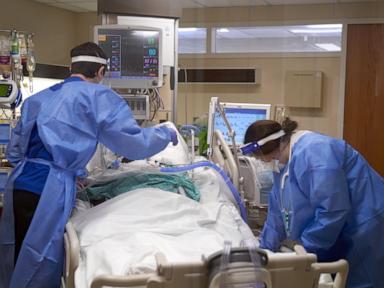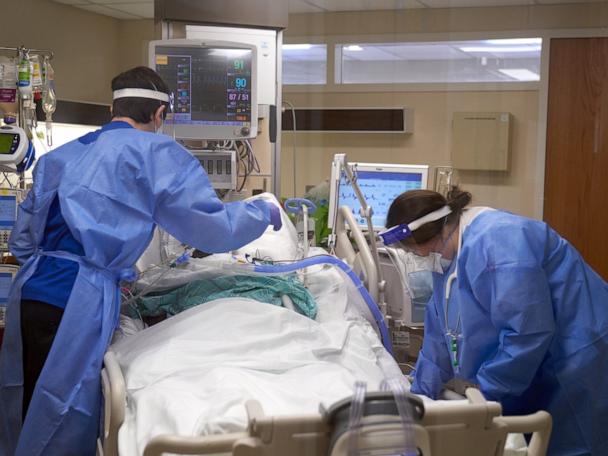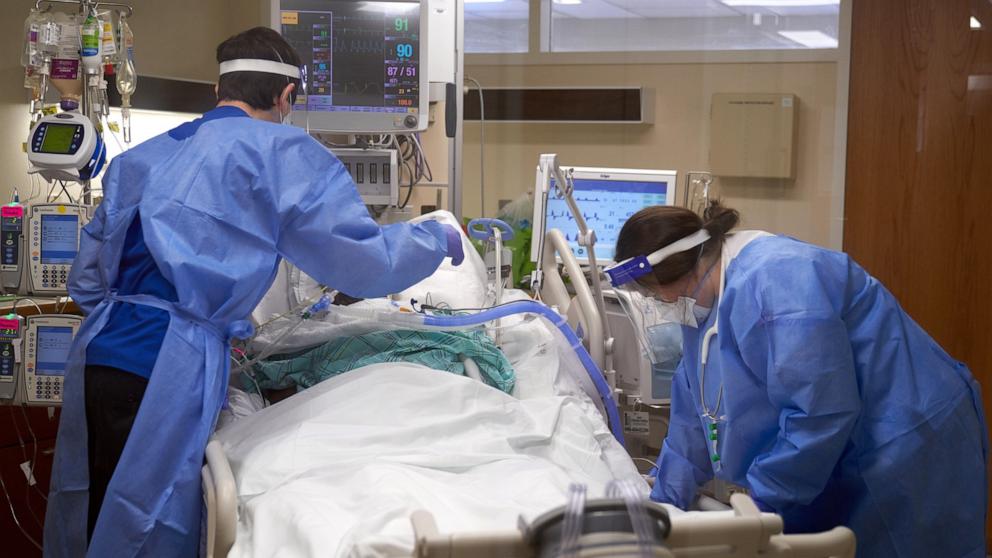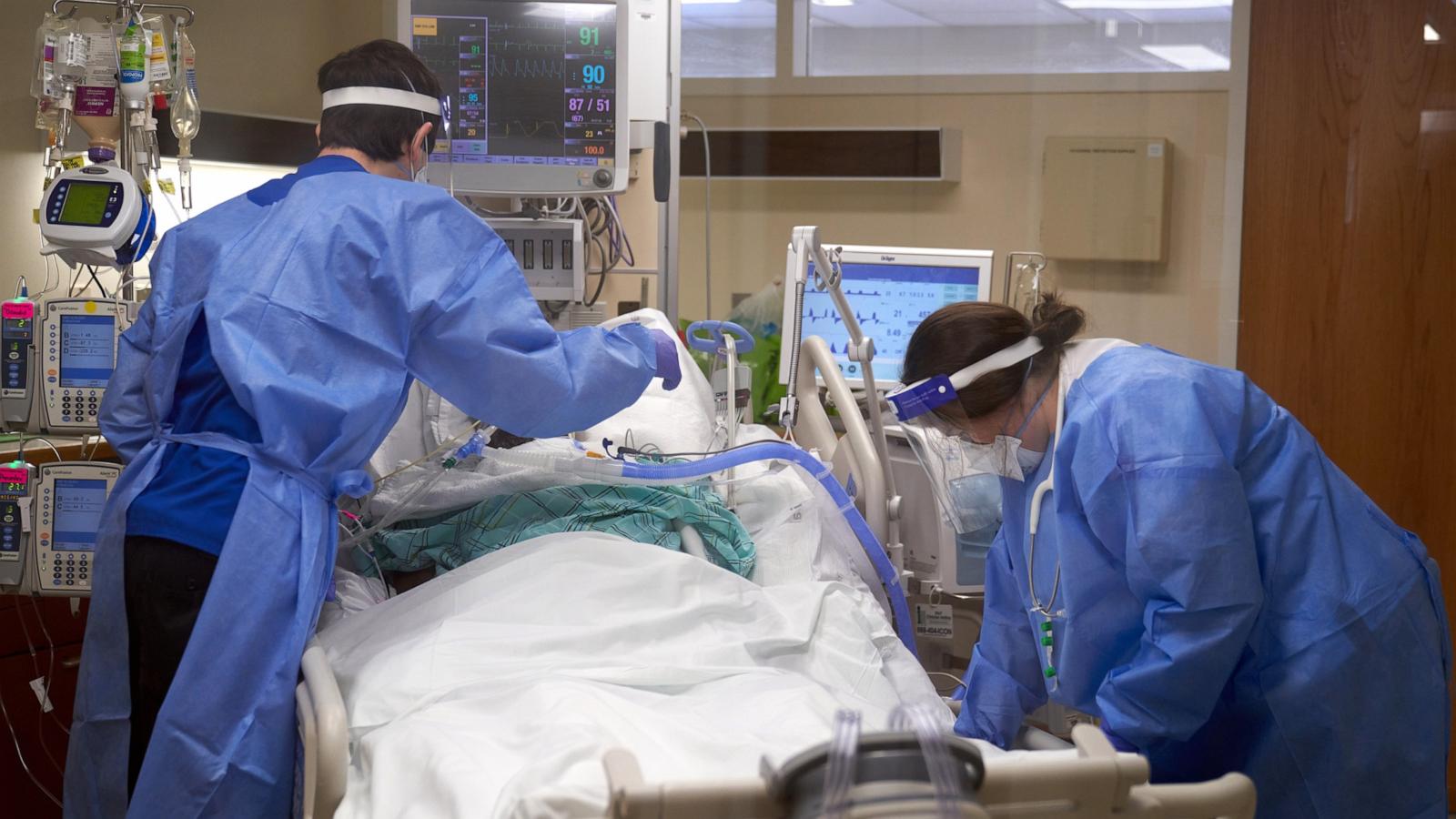






Seventeen states are seeing “high” or “very high” levels of respiratory illness activity as COVID-19 and flu hospitalizations increase across the U.S., new federal data shows.
Weekly COVID-19 hospitalizations rose to 23,432 for the week ending Dec. 9, up from 22,730 the previous week, according to data updated Friday from the Centers for Disease Control and Prevention (CDC).
This is the fifth consecutive week of increasing COVID-19 hospitalizations, reaching levels not seen since the end of February. However, they remain lower than rates seen at the same time last year.
COVID-19 hospitalization rates are still elevated for the oldest and youngest Americans. Those aged 65 and older have the highest weekly rate at 13.9 per 100,000 followed by those aged 50 to 64 at 3.1 per 100,000 and those aged 0 to 4 at 2.7 per 100,000.
Hospital admission levels are increasing with the mid-Atlantic and Midwest seeing a rising number of counties meeting the “moderate” level, between 10 and 19.9 hospitalizations per 100,000. Nearly 25% of all counties in the U.S. are at this level, CDC data shows.
Flu activity is also increasing with the Southeast, South-Central and Western U.S. reporting the highest levels, according to CDC data.

Weekly COVID-19 Hospitalizations in the United States(Jan. 7, 2023 – Dec. 9, 2023)
ABC News / CDC
Flu hospitalizations are continuing to rise with the number of new admissions reaching 7,090 for the week ending Dec. 9, up from 5,816 admitted the week ending Dec. 2, data shows.
In the past month, for all age groups, hospitalizations have increased 200% for COVID-19 and 51% for flu.
Meanwhile, RSV weekly hospitalization rates have slightly declined from 3.2 per 100,000 for the week ending Dec. 2 to 2.3 per 100,000 the week ending Dec. 9. RSV hospitalizations remain elevated among young children under age 4 and are increasing among older adults over age 65, but the U.S. may be turning a corner.
“We think we are just at the peak [of RSV], which means we’re seeing the most number of cases we expect in the season, may start to see some declines already in some of our southern and southeast states, but pretty active across the country,” Dr. Mandy Cohen, CDC director, told ABC News.
Some hospitals, particularly pediatric hospitals, have reported that they are at capacity. Janet Weis Children’s Hospital in Mechanicsville, Pennsylvania, told local ABC News affiliate WNEP that it’s run out of beds due to an influx of children with respiratory viruses including COVID-19, flu and RSV in addition to other illnesses and surgeries.
Geisinger Health System, which manages the hospital, told the station that about 15% of pediatric beds at nearby facilities remained unavailable for use after the pandemic, and is contributing to the flood of patients.
“There’s a lot of other illnesses that at times require a short hospitalization, but unfortunately, other times require a longer hospitalization, and that adds to the capacity crunch,” Dr. Frank Maffei, chair of pediatrics for the Geisinger Women and Children’s Institute, told WNEP.
Cohen told ABC News that there are isolated hospitals experiencing strain but, for the most part, pediatric hospitals have told the CDC they’ve been able to manage treating patients.
On Thursday, the CDC sent an alert to healthcare providers, encouraging them to administer COVID-19, flu and RSV vaccines as soon as possible.
Low vaccination rates, along with the spread of respiratory illnesses “could lead to more severe disease and increased healthcare capacity strain in the coming weeks,” according to the federal agency.
As of Friday, 18.3% of U.S. adults have received the updated COVID-19 vaccine and 42.2% have received the flu vaccine.
“We have the tools to protect folks and we don’t think that enough of our folks across the country have gotten vaccinated,” Cohen said. “So, we wanted to send out that alert to our medical community to make sure they knew it wasn’t too late to vaccinate, and that there are specific things that they could do.”

In this Jan. 31, 2022, file photo, healthcare workers treat a Covid-19 patient on the Intensive Care Unit (ICU) floor at Hartford Hospital in Hartford, Conn.
Bloomberg via Getty Images, FILE
The alert also encouraged doctors to recommend antiviral medications for COVID-19 and flu patients who qualify.
Experts have previously told ABC News that Paxlovid, a COVID-19 treatment from Pfizer for those at high risk of severe illness, has been a relatively underused treatment because some may feel they don’t need the drug or doctors may feel hesitant to prescribe it due to concerns about how the medication interacts with other prescription drugs.
“As we see more cases and more folks getting sick over the next number of weeks, as we expect, we want to make sure we’re reminding everyone about the treatment options that we have for COVID-19,” Cohen said. “And for flu, reminding doctors to use those treatments…So we wanted to send that alert to make sure that it was top of mind and that folks are both vaccinating — because it’s not too late to vaccinate — but also using treatment options for their patients.”
Dr. John Brownstein, an epidemiologist and chief innovation officer for Boston Children’s Hospital and an ABC News contributor, added that increases in respiratory viruses are often typical for the colder weather months and not cause for concern.
“These increases in respiratory illnesses are typical for this time of year, aligning with seasonal patterns,” he said. “There is no need to panic, but it is important to stay vigilant and follow health guidelines including staying up to date with recommended vaccines.”

